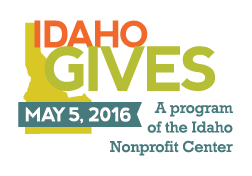 Janice Fulkerson, Idaho Nonprofit Center
Janice Fulkerson, Idaho Nonprofit Center
On the job since: 2014
Organization formed in: 2001
Geographic scope: Idaho, with collaboration in bordering areas
2015 budget: $495,000
Staffing: 3 FTE
What are the most important issues facing the nonprofit sector in your state?
The demand for services is ever increasing across all subsectors. Here are just some samples of tough issues:
- Healthcare. Idaho chose not to expand Medicaid, leaving many without access to ACA products. They make too much for Medicaid, and not enough to afford to buy an insurance plan. Legislature appears to be unwilling to fund the governors primary care access program, enhancing the gap.
- Education. Idaho generally has good high school graduation rates, but the “go on" rate — those going on to college — is very low. This creates income equity issues for those who don’t go on to a trade school, a technical or other college. It also has a long-term impact on business and their ability to hire/employ a skilled work force. Pre-K education is another issue facing the Idaho population. We know early learning is critical to long term success life success; making pre-K available is an issue the nonprofit sector is lacking.
- Open Space. The population increases across Idaho is having an impact on open public spaces and transportation in urban areas.
- Digital Technology. How do we adapt our communication, impact and donor relations?
- Rural Outreach. Reaching the rural areas of the state with support, both financial and non-financial resources.
- Executive Leadership. Training and retaining talented leaders in the nonprofit sector
What are your core strategies for addressing these issues?
There are three core strategies for addressing these issues:
- Collaboration with business, nonprofits, funders and government.
- Awareness and education of the interdependency of several issues, using data (impact reports) to support community results.
- Advocacy and public policy.
How can philanthropy best support capacity building for the nonprofit sector in your state? What sorts of investments are most needed?
Beyond the financial philanthropic support, being at the table to identify potential solutions, evaluating the successes, supporting course corrections when needed for impact, better outcomes and long-term sustainability.
What’s been a recent big success for your organization and what excites you about it?
 Idaho Gives, our 24-hour giving blitz, brings together business, government, donors and nonprofits to create awareness, opportunity, celebration and funding in a collaborative way. Idaho Gives raised over $1 million in 2015 and created lasting connections across the state. The next one will be May 5, 2016.
Idaho Gives, our 24-hour giving blitz, brings together business, government, donors and nonprofits to create awareness, opportunity, celebration and funding in a collaborative way. Idaho Gives raised over $1 million in 2015 and created lasting connections across the state. The next one will be May 5, 2016.
Policy initiatives have also gained significant momentum across Idaho to support engagement, education, and an expanded committee to interface with issues and solutions.
What are the most important public policy issues for you this year, and what are you doing about them?
Taxation is an ongoing policy issue. Also, a developing issue that is not well understood is the friction between for-profit and nonprofit in sustainability. Often the community wishes for nonprofits to become sustainable by identifying services or goods to sell or other ways to fund programs that is in addition to grants, donations and fundraising. Then private, for-profit companies feel threatened when the nonprofit is in a similar business space (animal care services, food service, education, etc).
What are the one or two best opportunities you see for nonprofits and philanthropy to “go beyond the grant” to work together to create sustainable change in communities?
I believe this goes back to collaboration. Partnering before, during and beyond the grant. Being at the table beyond the exchange of the grant, being involved, collaborating throughout the cycle.
What’s one more question we should ask you, and how would you answer it?
Q. Do I understand you are making a career change in the near future?
A. Yes and it was a very tough decision to make. Being the executive director of a state association really is the best job ever! I will be making a transition back to the health care sector in the coming months. The leadership and support of the Idaho Nonprofit Centers Board of Directors and the terrific staff makes the ED role a dream job. Because of their support, the Idaho Nonprofit Center will continue to be strong and deliver with excellence on its mission. All the work and plans will continue as scheduled, there is no slowing down! The board and staff are working very closely on a transition to ensure a planful and thoughtful transition.
Janice Fulkerson is executive director of the Idaho Nonprofit Center, joining us this month for our virtual roundtable with state nonprofit association leaders.